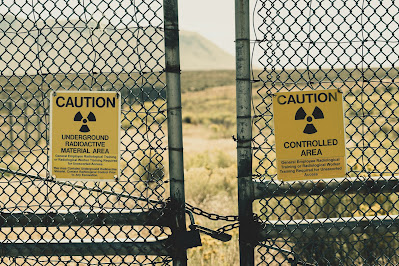Featured
- Get link
- X
- Other Apps
Adapting to Climate Change in Communities at Risk
July 2023
Adapting to Climate Change in Communities at Risk
The effects of climate change pose significant dangers to both people and ecosystems, particularly those who are marginalized socially, economically, culturally, politically, or in other ways. Adaptation refers to the process of adjusting to the current or anticipated impacts of climate change in order to minimize harm or exploit advantageous opportunities. The objective of adaptation strategies is to bolster the resilience and adaptive capacity of vulnerable groups, communities, and ecosystems while also supporting sustainable development and poverty reduction.
A World Bank report highlights six fundamental principles of adaptation and resilience that can assist policymakers in developing effective strategies:
1. Prioritize the most vulnerable: Identify and focus on individuals, locations, and sectors that face the highest risks from climate change and possess the least ability to cope and adapt.
2. Address uncertainty: Employ robust decision-making tools and methods capable of accounting for multiple potential future scenarios and sources of uncertainty.
3. Promote flexibility and learning: Monitor and evaluate the outcomes of adaptation measures and make necessary adjustments based on new information and feedback.
4. Strengthen institutions: Enhance coordination, collaboration, and communication among different actors and sectors involved in adaptation planning and implementation.
5. Leverage synergies: Identify opportunities to align adaptation objectives with other development goals, such as poverty reduction, improved health, biodiversity conservation, and increased social equity.
6. Mobilize finance: Secure sufficient and predictable funding for adaptation actions from various sources, including public, private, domestic, and international channels.
The report also offers 26 specific actions, 12 toolboxes, and 111 indicators that can assist in operationalizing these principles in various contexts.
Examples of adaptation strategies for vulnerable groups, communities, and ecosystems include:
1. Enhancing access to climate information and early warning systems for farmers, fishermen, pastoralists, and other rural communities dependent on natural resources for their livelihoods.
2. Strengthening social protection systems and safety nets for low-income households, women, children, the elderly, individuals with disabilities, and indigenous populations facing multiple forms of discrimination and marginalization.
3. Rehabilitating and conserving natural habitats such as wetlands, mangroves, forests, and coral reefs that provide valuable ecosystem services such as water regulation, coastal protection, carbon sequestration, and biodiversity conservation.
4. Promoting low-carbon and climate-resilient technologies and practices like renewable energy, water harvesting, agroforestry, soil conservation, and disaster risk reduction.
5. Building adaptive capacity through education, training, awareness-raising, knowledge-sharing, and participatory approaches that involve vulnerable groups and communities in decision-making processes.
These examples represent only a few of the potential adaptation strategies that can assist vulnerable communities in dealing with the impacts of climate change. However, adaptation is not a one-size-fits-all solution. It necessitates a context-specific analysis of vulnerability drivers and dimensions, the potential costs and benefits of different options, trade-offs and synergies among multiple objectives, and the preferences and values of stakeholders. Consequently, adaptation strategies should be customized to the local circumstances and requirements of each community or ecosystem.
Popular Posts

Why are Memories Forgotten?
- Get link
- X
- Other Apps

How is the Colour of a Lobster Determined?
- Get link
- X
- Other Apps

Can Sound Waves Solve Plastic Pollution?
- Get link
- X
- Other Apps

Can Animals Recognise Human Faces?
- Get link
- X
- Other Apps

Is the Earth Spinning Faster?
- Get link
- X
- Other Apps

Do plants sleep? The surprising science of sleep in the plant kingdom
- Get link
- X
- Other Apps

Can Bad Times Actually Improve Your Life? Surprising Benefits of Adversity
- Get link
- X
- Other Apps

Can Brain Implants Make You More Powerful?
- Get link
- X
- Other Apps

The Future of Space Tourism and Its Impact
- Get link
- X
- Other Apps

The Future and Potential of Nuclear Batteries
- Get link
- X
- Other Apps
Popular Posts

Why are Memories Forgotten?
- Get link
- X
- Other Apps

How is the Colour of a Lobster Determined?
- Get link
- X
- Other Apps

Can Sound Waves Solve Plastic Pollution?
- Get link
- X
- Other Apps

Can Animals Recognise Human Faces?
- Get link
- X
- Other Apps

Comments
Post a Comment